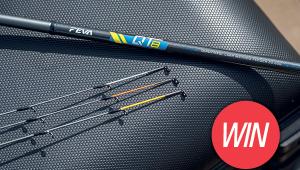Bomb & Pellet Fishing - Matt Pillay
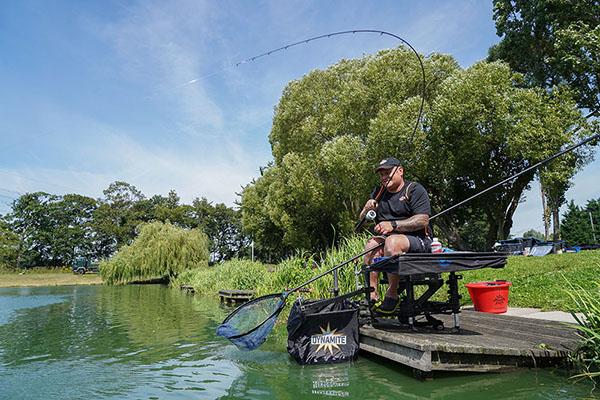
A few weeks before this feature I had a conversation with a well-known match angler (you know who you are!) who was trying to tell me how the bomb is simply a ‘chuck it and chance’ method.
After shaking him violently for a short time (only joking) I asked him why the same anglers get good results using the technique all over the country?
Like anything else the bomb is an art that needs to be mastered and is as important a part of your armoury as catching f1s shallow, carp on a pellet waggler or skimmers on a feeder for example.
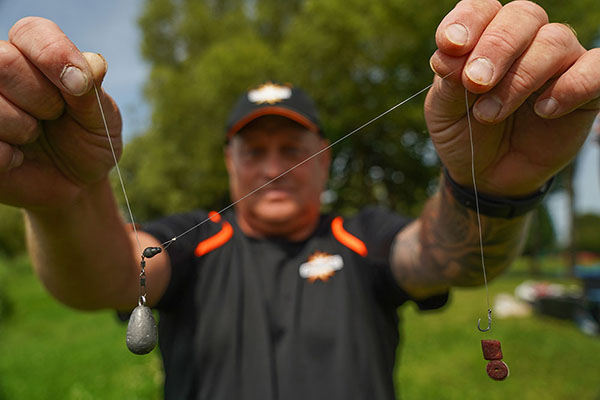
On a personal level I absolutely love any opportunity I get to fish the straight lead, it’s possibly my favourite way of commercial fishing. I honestly don’t think there’s anything finer than getting your rod savagely pulled into a horseshoe shape by a big angry fish fighting for freedom.
Over the years I’ve had loads of success on the method to the point where I’ll often only get one bomb rod out of the bag and that’s it!
Now to some extent my bomb-hating buddy is correct. I see a lot of anglers resort to it as a last gasp method and simply pick it up later in the day and hope it goes round odd times. But to get the best out of it you really need to properly commit to it by designating and feeding a proper bomb line. Feeding is one of the most important aspects of bomb fishing and that’s where I believe a lot of people go wrong.
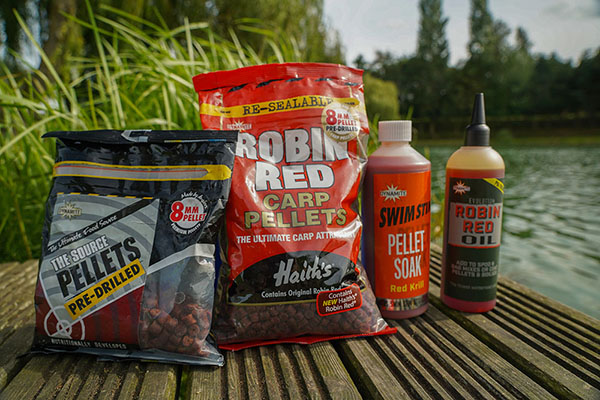
It really hit home to me at Lindhome Lakes a long time ago, during a match on Bonsai Lake where I’d been catching really well on the pole shallow by rafting in 4mm pellets. For some reason I put the pole down and chucked the bomb out over my shallow line - I probably wanted to eat a cake or something!
It was unbelievable, the pellet had hardly touched down before the rod got dragged in and what’s more it proceeded to do so for the rest of the day. I won the match with 220lb with 160lb second taken shallow. On the next match I didn’t even set a pole up, but I won again on the bomb at long pole line distance and I had a great run for some time before people cottoned on to what I was up to.
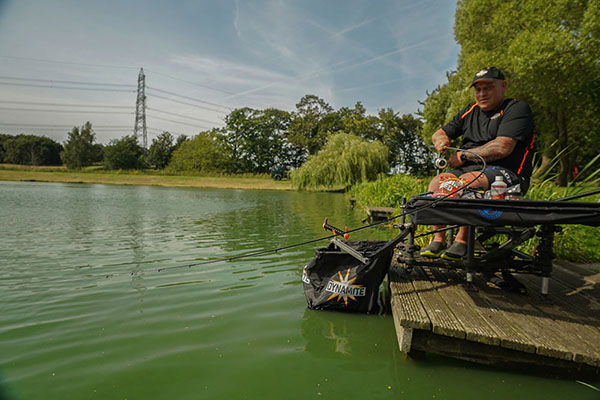
The Bonsai especially during the summer is perfect for this type of approach as it’s very silty, so pole fishing on the deck is a recipe for foul hookers. This year’s July festival on there was dominated by the bomb, with anglers feeding anything between four and eight bags of 4mm fishery Coppens pellets, which works out at 10 – 16 pints!
The crazy thing is you hardly had a liner and bites came so quickly that they must be literally like piranhas on the bottom, mopping every single particle up.
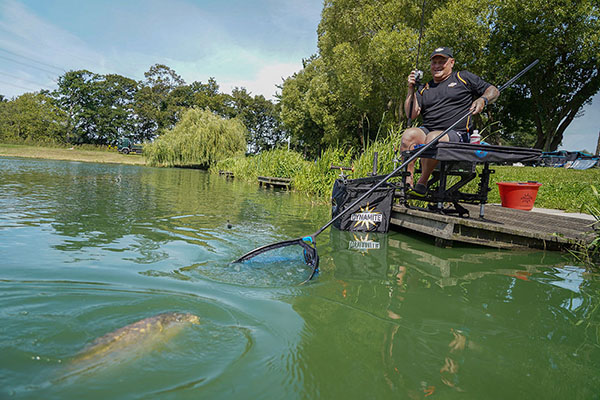
What I’m trying to say is you have to feed, feed and feed some more! But a lot of bait on one venue may be next to nothing on another so trial and error is often the only way to find out. Although a carp is a carp and F1 an F1, you definitely find that the fish respond to different ways of feeding and also different types of feed on different venues.
As mentioned Lindhome fish love 4mm pellets absolutely ‘rafted’ in, as many pellets as you can, but by contrast at Messingham Sands for example they love 11mm pellets constantly pinged in groups of twos and threes. The fish are much bigger at Messingham although there’s a massive head of silverfish to get past.
At Larford Lakes two pouches of 8mms is the key, as it also seems to be where I am today, the fantastic Maver Dynamite Hayfield Lakes. Hayfield is deep and often has a strong undertow on, so this feeding style helps to push the fish down to the deck. It’s the opposite principle to the pellet waggler.
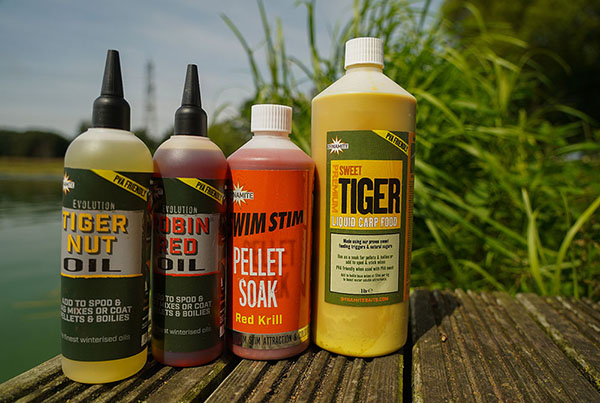
A lot of venues have a fishery-own pellet ruling these days and when you look around you on matches everybody is doing the same thing, firing the same identical 8mm pellets as far as they can on a similar line, for the bomb and waggler.
I’m very big on putting something on my own pellets to make them different to everybody else’s. Doing this can also add a bit more weight to the pellets, making them catapult further than neighbouring anglers so it’s a no brainer for me really.
My favourite liquid to add is the Dynamite Complex T which is from the specimen carp range, but match-sized carp love it too. The other product I really like to do this is the Robin Red Oil which will serve to darken the pellets as well.
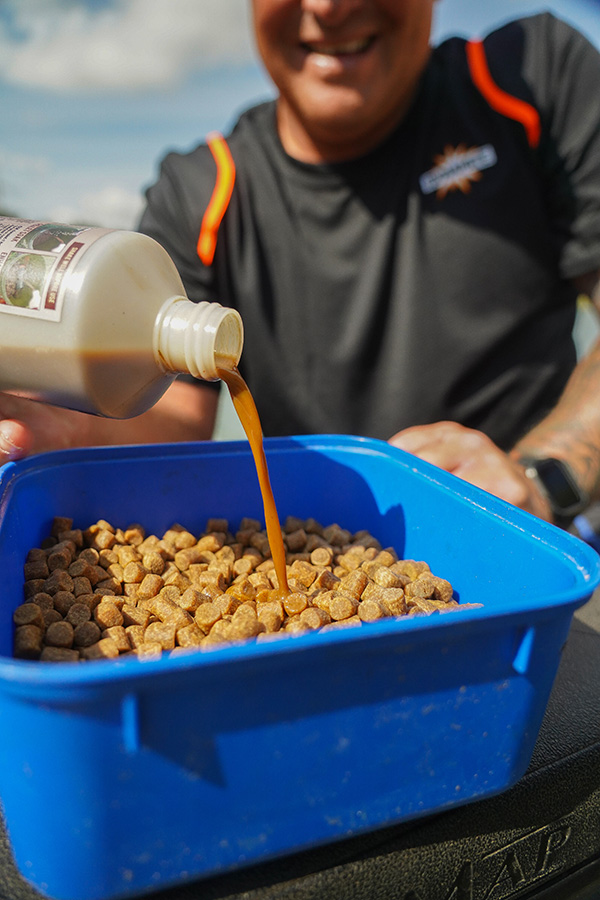
Hookbait choice can also have a huge impact on your catch rate and I see a lot of anglers get into the habit of automatically popping a single pellet into a band. While this will catch its fair share of carp, when struggling on this or when bites tail off, it’s amazing how often changing to a double or even triple hook bait is like flicking a light switch on in the peg.
It’s certainly happened to me on several occasions. I think this gives the fish a bit more to home in on as you are never going to have many feed pellets very close to each other when fishing 30 odd metres into a lake for example.
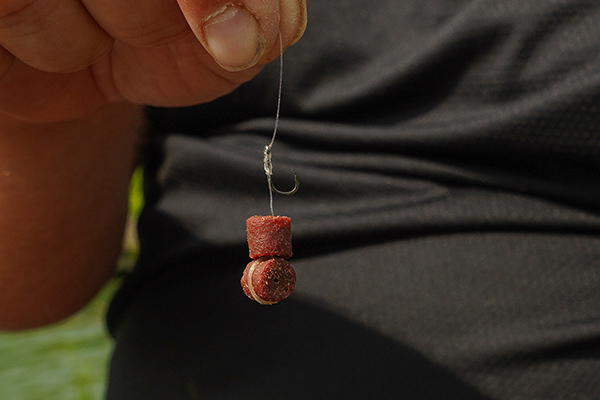
I find the red 8mm Dynamite Source pellets ideal for this and they come pre-drilled too. I don’t feel that using two pellets in the same bait band offers very natural presentation. A far better way is to pull the hair-rigged band through the first pellet with the aid of a very fine baiting needle, then simply pop the second pellet into the band to trap the first pellet on the hair.
To do this off course you need to make a hooklength with a much longer hair than normal, to allow for that first pellet sitting inline on it. Another bomb hookbait which is also ‘in fashion’ is two 8mm expander pellets. You can’t band these however so you will have to use a small bait stop or Quick Stop on the end of the hair.
The weight of the lead is a very topical point – some prefer to fish as light a weight as possible while others use a heavier one to achieve more of a self-hooking effect. For me bomb weights are just like float sizes, you would never carry just one float pattern in the same 1g size would you regardless of the situation?
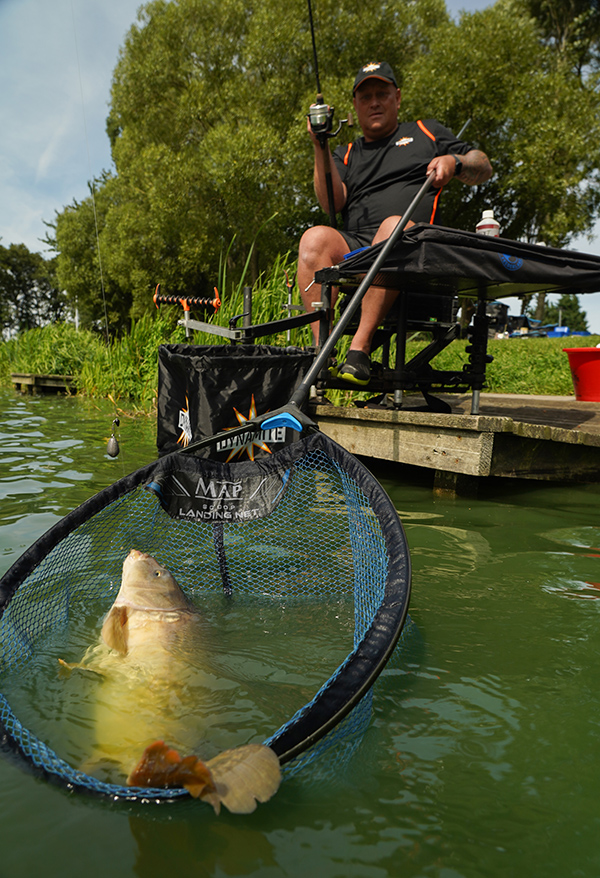
There are so many factors such as depth and casting distance that it pays to carry a range of sizes from 10g to 40g. On some days I think they absolutely love the heavy thump of a big lead going into the peg, on others sneaking the smallest weight you can into a swim will be key. Little changes and a little thought like this will catch you more fish.
Another area worth discussing is line diameter and whenever I fish on the bottom I always try to fish as heavy as possible. This summer the majority or my lead work has been on 0.26mm hooklengths! Most anglers probably think 0.20mm is heavy but my thinking is that fish have their heads down and tails up so they cannot see a line lying flat on the deck, especially on a muddy, silty bottom.
On the flip side when I’m fishing shallow I fish as light as I dare think I can get away with as fish are looking up into the sky and possibly see the line more easily.
For the bomb I only use one type of hook which I have 110% confidence in, the Guru SMWG. It’s bullet proof and never lets you down, again I try to fish on the positive side of things with a size 12 being perfect for an 8 – 11mm pellet. For smaller stamp fish then you will have to step down a size of two.
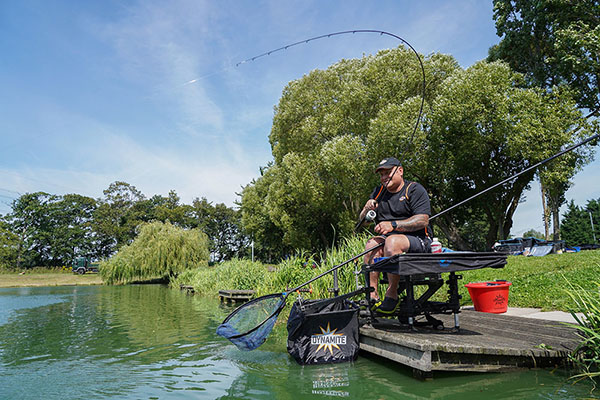
Traditionally the bomb set up has always been very simple and the majority of people use the same 12ins long hooklength which fits in the box. I was always the same and it’s been good but in recent times experimenting with either longer or shorter lengths has sometimes made huge improvements.
Today on Adam’s Lake at Hayfield for example, I was getting very twitchy bites. It was like the fish were sat there trying to ‘get away with it’ and eject the bait. I halved the length of my 12ins hooklength and the transformation was very clear to see – every bite from there on after was pulling the rod in. Of course a short hooklength isn’t always the answer but it is the right thing to do on some days.
I was always an advocate of fishing the lightest action rods available and the MAP 10ft Feeder was always my choice of rod. Then we did an SUV (Stepped Up Version) which I fell in love with due to the extra power and control it gave me.
We now have the Ultra 2 range which are without doubt the most perfect rods for the job I’ve ever had the pleasure of handling! So I now err on the side of something with that bit more power, especially with the heavy lines and extra strong hooks combination, for total control and confidence.
In conclusion I hope this has given a little insight into something that’s regarded as just a lucky chuck it and chance method. It’s far from it and as the weather gets cooler and cooler you have to adapt accordingly, again paying careful attention to what size pellet, how many and how often you are feeding.
Good luck and top bombing!
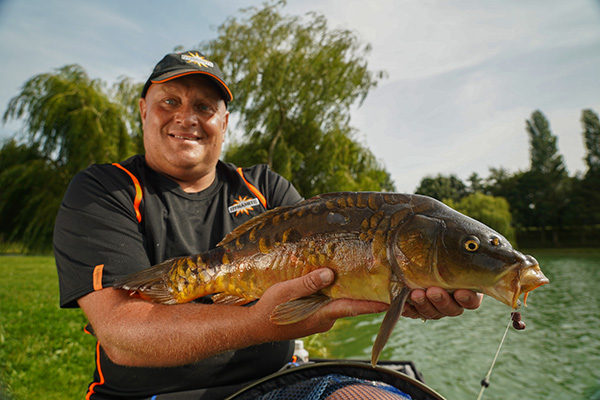
- Log in or register to post comments










